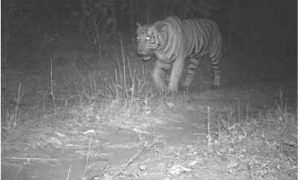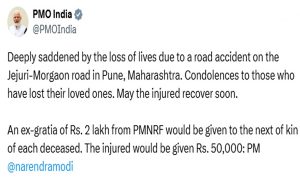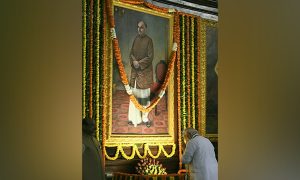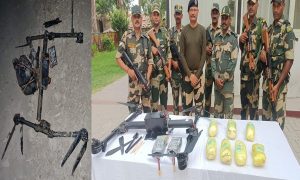The Rajasthan government has ordered an inquiry and has suspended two forest officials after two radio-collared tigers died in newly created Mukundra Hills Tiger Reserve (MHTR) within 15 days.
Assistant forest conservator Rajesh Kumar Sharma and forest ranger Makkhan Lal Sharma were suspended on the charges of negligence in discharge of government duty.
According to a government order, an inquiry has been set up to determine the cause of the death of tigers MT-3 and MT-2; to enquire into the circumstances that led to the deaths and to establish laxity on part of any officers/ staff if any.
The government has also directed to affix responsibility accordingly and to review the existing systems of management in the tiger reserve including monitoring protocols, identifying lacunae, if any, and suggest ways to improve and strengthen facilities and systems.
Principal chief conservator of forests (development) Yogendra Kumar Dak has been appointed as the enquiry officer, according to an order by forest secretary B Praveen.
The carcass of radio-collared MT-2 tiger was found at Beora Talai in MHTR on Monday, 48 hours after its death, which, experts said, showed that the movement of the tigers was not being monitored.
Rajasthan’s representative in National Tiger Conservation Authority (NTCA), the apex body in the country, Daulat Singh Shaktawat said that fact that the wildlife department found the body of a radio-collared tiger 48 hours after its death is enough to indict the MHTR officials. “If they cannot track a big cat with a radio collar, what will they do with other tigers?” he questioned.
Shekhawat, who has been DCF in Ranthambhore Tiger Reserve, said the vet who conducted the autopsy of MT-2 told the media that the tiger died at least 48 hours before its carcass was found.
MHTR tourism advisory committee member Tapeshwar Singh Bhati also blamed lack of monitoring for the death of MT-2. “The tigress had infection. The forest department did not do anything about it on time,” he said.
Kota chief conservator of forest Anand Mohan said there was a technical glitch in the radio collar. “We received and downloaded signals from the radio collar of MT-2 on July 31; after that signals were unavailable due to technical glitch until Tuesday morning,” said the officer who was removed on Tuesday.
Mohan said there was no lapse in monitoring. “There is heavy growth [of vegetation] in the reserve and streams are full of water in the monsoon making it difficult for us to track tigers in the field; tracking of a tigress with cubs is even riskier,” he said.
But conservationists don’t buy these arguments. They are unsure how could there be any territorial fight when there are only three big cats.
“The death will happen, be it natural or unnatural due to conflict, accidental or, in rare cases, due to poaching, which is negligence. Death of two tigers is a serious concern,” said YK Sahu, who was the field director of Ranthambore when tigers were moved from Ranthambore to Mukundra.
MT-3 died 12 days ago on July 23 under mysterious circumstances.
Mukundra Hills was declared a tiger reserve in 2013 with portions of wildlife sanctuaries of Kota, Bundi, Jhalawar and Chittorgarh. It is spread across 759 square kilometre area and is now left with two adults tigers and four cubs. Of the four cubs, one is missing and another has been admitted to Kota zoo in critical condition.
MHTR was notified because it was an important corridor for Ranthambore tigers.
“The plan was to decongest Ranthambore and make MHTR a satellite area for big cats,” Sahu added.

Sariska Tiger Foundation president and former IFS officer Sunayan Sharma said the shortage of skilled staff, especially forester, rangers and guards, was an issue with all wildlife sanctuaries in the state including Mukundra.
Source: Hindustan Times




























 WhatsApp us
WhatsApp us